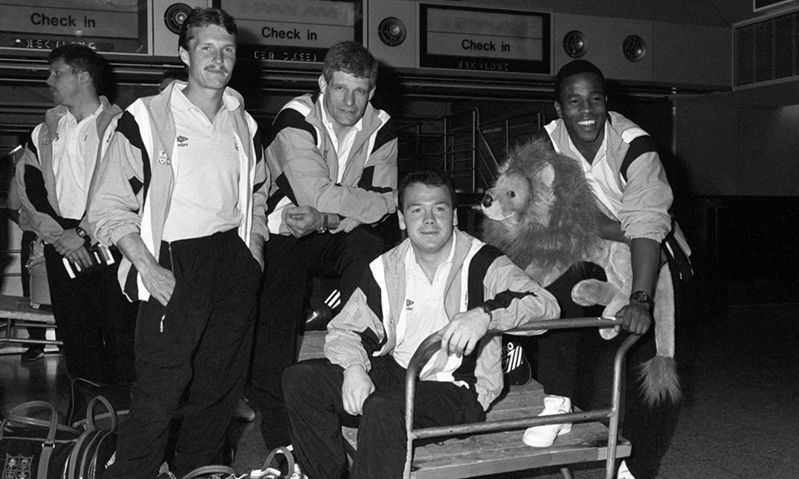What would you rate as your favourite Lions tour of all time?
Readers of a slightly older vintage would possibly opt for the Carwyn James coached team that beat the mighty All Blacks in 1971 or the side three years later led by Willie John McBride that whitewashed the Springboks.
Those a bit younger in years would possibly pinpoint the dramatic tour to South Africa in 1997 when Martin Johnson’s men pulled off a 2-1 series win.
However, with the current pride of Lions in Australia at the moment, how many people would count a previous tour to the same country in 1989 as their top pick?
That series is one which seems to have been largely forgotten about, yet it is up there with some of my all-time sporting memories.
The squad was coached by Ian McGeechan and contained another eight Scots, Gavin and Scott Hastings, Gary Armstrong, Craig Chalmers, David Sole, John Jeffrey, Derek White and tour skipper Finlay Calder.
The Lions were unbeaten in their provincial matches and approached the first test in Sydney in a buoyant mood.
That confidence was sadly misplaced with the Wallabies romping to a 30-12 victory, scoring four tries through Greg Martin, Lloyd Walker, Dominic Maguire and Scott Gourley.
The Lions’ performance was savaged by the media with “Pussycat” headlines prompting Calder to offer to stand down as captain.
However, he was still at the helm in a much-changed Lions side for the second must-win test for the tourists in what became known as the “Battle of Ballymore”.
The game was absolutely brutal in its intensity with the tone set at the first scrum when Welsh No.9 Robert Jones trod on opposite number Nick Farr-Jones’ foot.
As the half-backs started scrapping, both packs joined in and a mass extended punch-up ensued with English “enforcers” Mike Teague and Wade Dooley prominent in the mayhem.
It’s fair to say that under today’s disciplinary process, the main combatants would have at the least been yellow carded if not sent for an early bath however back in 1989 they were all allowed to remain on the field to continue hostilities.
There were further flare-ups with the Australians visibly rattled by the onslaught and the Lions eventually ran out 19-12 winners with late tries by Gavin Hastings and an audacious chip and gather by the young Jeremy Guscott.
The Australian press had a field day afterwards, savaging what they felt were deliberate bully-boy tactics by the Lions.
McGeechan’s men simply ignored the bleating as the third and decisive test approached again in Sydney.
The game was a tense affair dominated by the boot but the decisive moment came when Aussie legend David Campese threw a wild pass behind his full-back Martin on his own goal line with Lions wing Ieuan Evans pouncing to touch down for the critical try.
Whether that score would still stand under the rigorous examination of today’s multi-angled TV scrutiny is open to question however the fact remains that it was awarded at the time to allow the Lions to win the game 19-18.
It was a historic achievement it was the only time a Lions side had come back from losing the first test to win a series.
Yet despite that, those heroes from 1989 seem to be largely forgotten about, but why should that be?
Some pundits would point to the fact that the Aussie side they faced was far from a vintage one which possibly devalued the achievement, yet just two years later, the Wallabies would lift the World Cup at Twickenham.
Others may have been reluctant to celebrate a triumph that’s foundation was built on such a confrontational style in the last two tests but there is more than one way to win a game of rugby and sometimes that means it isn’t for the faint-hearted.
I think though that there are other reasons why the 1989 win has faded from a lot of memories.
Unlike today’s blanket coverage on TV and in the press, back then, there were relatively few reporters following the Lions.
Also, the games were broadcast at the crack of dawn here and those without access to a VCR remember them? had to set their alarm clock for a 6am start on BBC.
I certainly wouldn’t mind seeing the comparative viewing figures from now and then.
Since 1997, there has also been the highly-successful “Living With Lions” fly-on-the-wall documentaries giving unprecedented access to every facet of the touring experience.
There was certainly nothing like that following the 1989 triumph and even now, if you visit online retailer Amazon, there is one video of the tour with highlights of the games, but it is currently unavailable.
Calling Calder’s men unsung heroes may be going a step too far but they are certainly deserving of the sort of glory and honour bestowed on other vintage Lions.
And it is also worth noting that just a year after the tour, Scotland would go on to clinch the Grand Slam, thanks in no small part to their Lions contingent.
